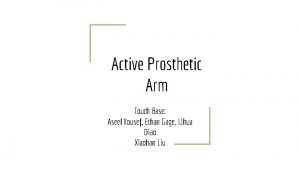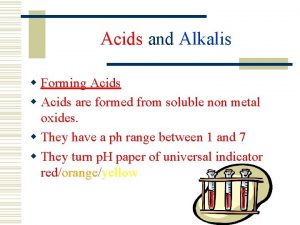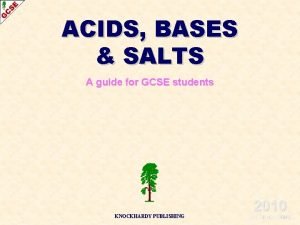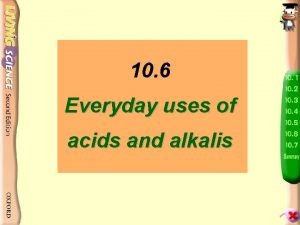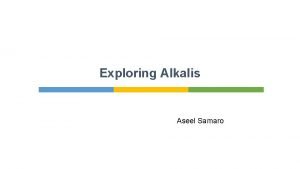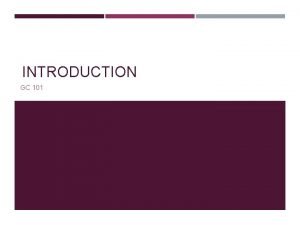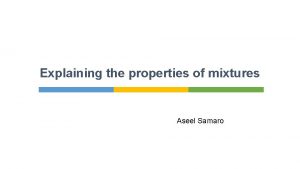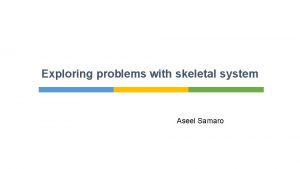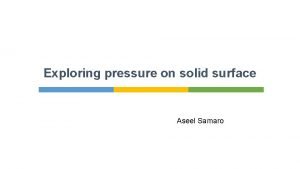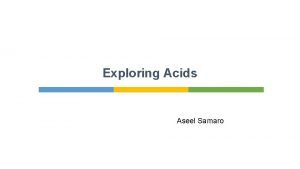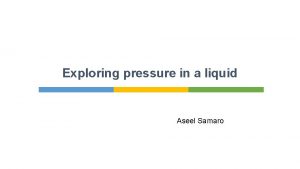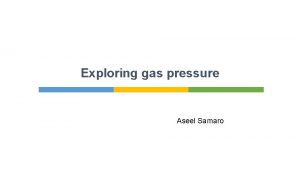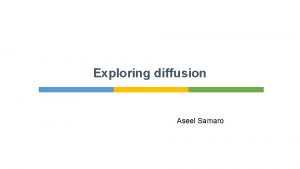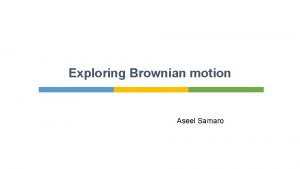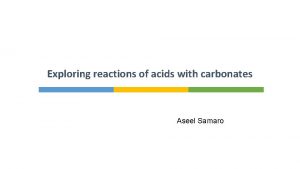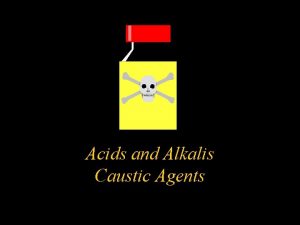Exploring Alkalis Aseel Samaro Introduction Many of the
















- Slides: 16

Exploring Alkalis Aseel Samaro



Introduction § Many of the cleaning products that we use have something in common – they all contain an alkali. § It is the alkali that gives soap, shampoo and washing powder a soapy feeling. § We have alkalis all around us and life would be very different without them.

Useful Alkalis § Some alkalis are harmful. However, many alkalis are harmless and are very useful. § Many cleaning products – such as bleach, oven cleaner, disinfectant and washing powder – contain alkalis. § Toiletries such as soap, shampoo and toothpaste also contain an alkali. § Even some medicines such as indigestion remedies contain alkalis. § When you bake a cake, you use baking powder to ensure that the cake is light and fluffy. § Baking powder contains an alkali called sodium hydrogencarbonate (sodium bicarbonate). Without it, your cakes would be like biscuits!


Name some alkaline cleaning products. Name two alkalis that are safe to put in your mouth and two that are not. Suggest how your life would change if there were no alkalis.

Name some alkaline cleaning products. bleach; oven cleaner; soap; disinfectant; washing powder Name two alkalis that are safe to put in your mouth and two that are not. safe – toothpaste and baking powder; not safe – bleach and oven cleaner Suggest how your life would change if there were no alkalis. sensible suggestions such as unable to wash; clean our teeth; clean our houses as we do now

What do alkalis have in common § Most alkalis feel soapy to touch. § Soap forms because the alkali reacts with fats on your skin. § However, some alkalis are too harmful to put on your skin. § The common feature of all alkalis is that they contain hydroxide particles (chemical symbol OH). § Sodium hydroxide, Na. OH, is the alkali used in many cleaning products, such as oven cleaners. § Calcium hydroxide, Ca(OH)2, is an alkali used by gardeners when their soil is too acidic. § Both of these products would be harmful if you swallowed them. Magnesium hydroxide is the weak alkali found in many indigestion remedies.

What is the common feature of all alkalis? Which elements are contained in: calcium hydroxide? sodium hydroxide? Suggest what the chemical formula for magnesium hydroxide is.

What is the common feature of all alkalis? They contain hydroxide ‘particles’ Which elements are contained in: calcium hydroxide? calcium, hydrogen, oxygen sodium hydroxide? sodium, hydrogen, oxygen Suggest what the chemical formula for magnesium hydroxide is. Mg(OH)2 (Mg. OH is a reasonable suggestion)

Dangerous alkalis § Many of the alkalis in our homes are dangerous. The most dangerous alkalis include oven cleaners and caustic soda (to unblock drains). § These substances are corrosive – they both contain the alkali sodium hydroxide. § Other alkalis are classed as an irritant, rather than corrosive. Examples are bleach and disinfectant. § Alkalis are often more dangerous than acids given the same hazard classification. § This is because it can be hard to rinse an alkali from the skin because it becomes soapy.

Bleach often has ‘irritant’ written in braille on the bottle. Suggest why this is important. Draw the hazard symbol that would be found on a bottle of bleach. Bleach contains sodium hydroxide and another chemical, sodium hypochlorite. Bleach is dangerous, but caustic soda is even more dangerous. Suggest why.

Bleach often has ‘irritant’ written in braille on the bottle. Suggest why this is important. to allow blind people to know that the bottle contains a dangerous chemical Draw the hazard symbol that would be found on a bottle of bleach. see Figure 2. 4. 2 c in the Student Book Bleach contains sodium hydroxide and another chemical, sodium hypochlorite. Bleach is dangerous, but caustic soda is even more dangerous. Suggest why. Caustic soda is a strong alkali and is corrosive; bleach is a weaker alkali and is an irritant.

Did you know…? § In the past, stale urine was used as a source of the alkali ammonium hydroxide. It was used to bleach and clean clothes – it was even used in toothpaste!

Thank you

